
Mehndi henna design done on hands. (Photo source: Apeksha Salunkhe)
If you are a fan of old classic Hollywood movies you would have definitely heard the term, “classic beauty” or “timeless beauty” to refer to actresses like Marilyn Monroe and Elizabeth Taylor. This statement did not refer to timelessness of aging, but was used as a figurative statement for preserved generational standards of beauty. Some things are like that, they surpass the social standards of what it means to be beautiful and transcend through generations. It’s preserved as the ideal representation of that word for eternity. Beauty is definitive. It can be described symbolically through a person, an object and sometimes even customs and norms.
Henna adornment is one of those rare representations of timelessness. Henna art has been practiced for millenniums. What makes it so outstanding? Why has it survived for so long? How can this one form of art reveal so much about ourselves?
What is Henna?
Henna (Lawsonia inermis) is a plant-based dye created from the henna tree, also known as Egyptian privet, and mignonette tree. The leaves of the henna plant produce a natural pigment that can be used for temporary body art, hair coloring, skin dye, fingernails as well as fabrics such as leather, wool, and silk.
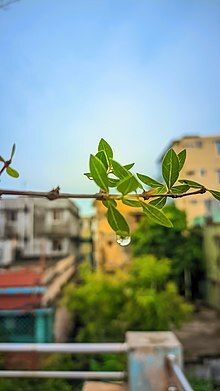
Henna leave with rain droplets. (photo source: MD Murad)
Henna usually grows in warm climates of approximately 120F degrees. Inversely, henna can sometimes grow in temperatures below 50F degrees. Henna can be found in countries such as Tanzania, Kenya, India, Pakistan, Egypt and the Middle East.
The henna plant contains an active compound called Lawsone, an orange-reddish dye that binds with keratin (a protein) in our skin to stain it forming temporary coloration on the skin surface it touches. The dye can last from 7 days to 3 weeks depending on the intensity of the dyeing process and how long it was left to sit on the dyed surface.
The henna stain usually varies from deep burgundy to pale orange depending on the quality of the leaves and what mixture you used to make the henna paste. Henna grown in hot and dry weather will have the best stain and last the longest.
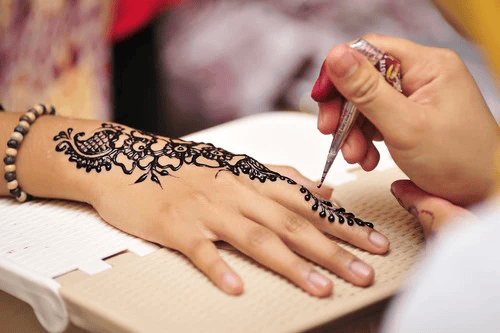
An artist painting a woman’s hand. Henna art is a decoration style that has been practiced for generations. (photo source: Wissal Dardar)
History of Henna Art and Adornment
The word henna is from Arabic “Al-Hinna”. The earliest written evidence of henna being used as an adornment for a bride is in 2100 BCE from northwest Syria. Historically, henna was used in West Asia including the Arabian Peninsula and in Carthage. Other parts of North Africa, West Africa, Central Africa, the Horn of Africa and the Indian subcontinent have also been familiar with this form of art.
The art of Henna, called “Mehndi” in Hindi and Urdu, has been practiced in India, Africa and the Middle East for over 5000 years. It was originally used as a cooling property during hot climate. A paste would be made in which the palms of hands and soles of feet would be soaked. It was also used for medicinal purposes and applied to the skin to treat ailments such as sores, burns, headaches, stomachaches, and open wounds.
Today, Henna is mainly used in celebration of special occasions such as weddings and birthdays. The Henna paste symbolizes good health and prosperity in marriage, and in some cultures, the darker the henna stain, the deeper the love between couple.
Assar, a chief executive artist at Los Angeles-based Neha Assar Henna Artistry explains, "Traditionally, wedding henna always had the name of the significant other written in it. It is supposed to be meticulously hidden for it to be searched for on the wedding night. In the old days, arranged marriages were very common so this tradition was used as an ice breaker for the couple to get to know each other a little better."
The introduction of Henna art in East Africa
It is not clear exactly when henna was introduced in East Africa. Although there is certainty that trading routes brought henna to the Swahili coast early on. It’s far more likely that it was brought by Arab merchants in the 17th century, or the middle Ages, during the period of the Kilwa Sultanate.
The Swahili translation of the word “henna” supports this theory since it is widely known that both mhina and hina are loanwords from the Arabic word” al-hinna” which refers to the red mangrove, another dye plant that produces a similar color, in Swahili known as Mkokowa. This means that henna was less likely introduced by Indian Hindu migrants who would have referred to henna as “mehndi”.
By the 19th century, henna was an essential part of the culture of the Swahili coast practiced by all the ethnic groups that lived there such as Africans, Arabs, Indians, and Afro-Arabs. Edward Steere, a 19th-century English missionary records how henna appeared as a part of the wedding festivities for African families in Zanzibar. He said, “It is a rule to spend seven days after marriage in the bride's house without going out, during which time the bride's father sends provisions daily, and the bridegroom is scented, and his hands and feet stained with henna, as is usually done by women. This period of seven days is called fungate (seven).”
In the early 20th century, slave women were responsible for preparing and applying henna for their masters for both weddings and regular use. They were also allowed to use the henna themselves. After the henna was applied, slave women were responsible for taking care of their helpless masters. "No defense is possible against mosquitoes and flies, though the wealthy can have them fanned away by slaves until morning, when the dough is carefully removed" says Sayyida Salama, an African historian.
During weddings, while the henna was applied, women sang a type of oral poetry called Vugo ‘buffalo horns,’ from the instruments that were used. These spontaneously rhymed songs were used to reinforce traditional values or serve as pointed jabs at various members of the bridal party. Other songs prepared the bride for her new social role and offered advice from older family members.
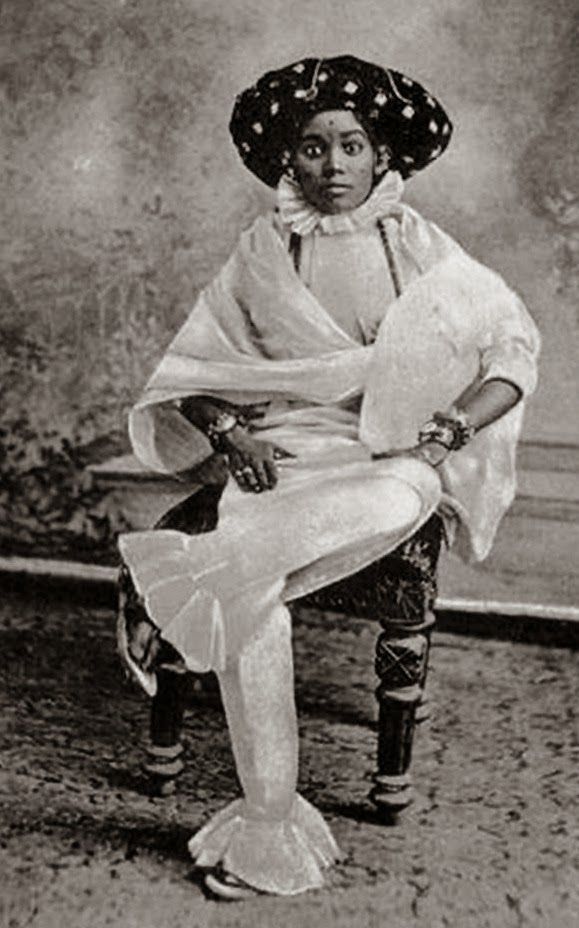
An Arab woman posing on a picture with henna art on her hands and face, Zanzibar 1913 ( Photo source: Noam Sienna)
Symbolism and designs
Since the beginning, henna has been used as a decorative means to send messages, and symbolic illustrations with underlying meanings.
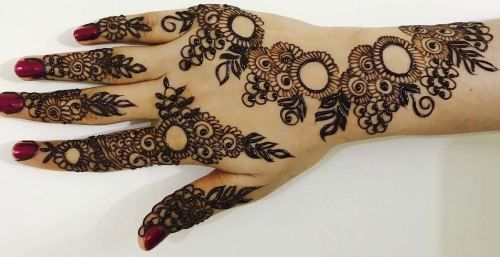
Leaf design henna art (photo source: Sonamistry mehandi)
There is no more intricate and lively design in henna than a decorative vine or creeper. Leaves are a symbol of vital force and liveliness. Vines full of leaves signify prosperous life. Creepers, in real life, can be tenacious and show much more perseverance than full-blown big trees. This design is a symbolic representation of tenacity, perseverance, and liveliness.
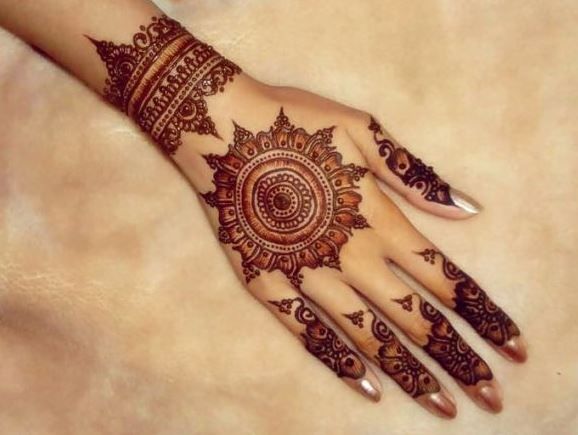
Mandala design henna art (Photot source:BYRDIE)
Here the whole decoration is based on a central circle which is the main focal point of the design. The main circle is called Mandala in Hindu and Buddhist traditions. A mandala is a pictorial representation of the universe. It signifies the wholeness and ominous nature of life.
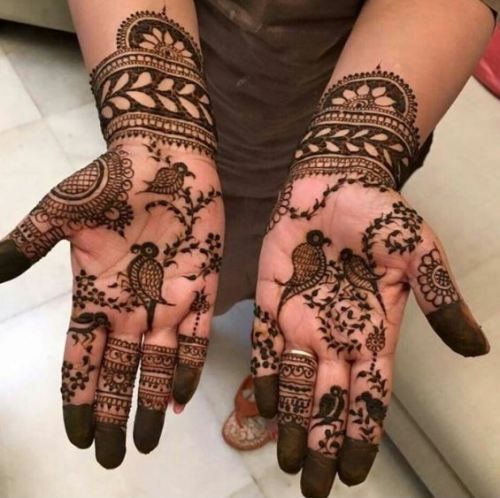
Birds design henna art (Photo source:Wedmegood.com)
In many ancient cultures, birds were considered as the connective link between heaven and earth. Birds are also named the bearers of happiness in our lives. The bird design signifies freedom and the free flow of the soul.
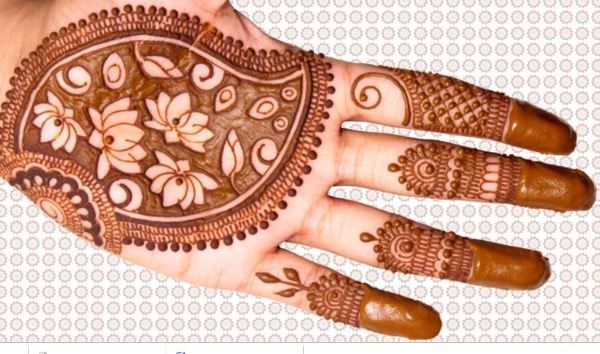
The lotus henna design (Photo source :fashionlady.com)
Lotus symbolizes purity. This flower grows in the murkiest muddy places and rises itself higher with divine grace. Lotus designs represent love, prosperity, and harmony between hearts. It also signifies the sensual feminine nature, beauty, and grace.
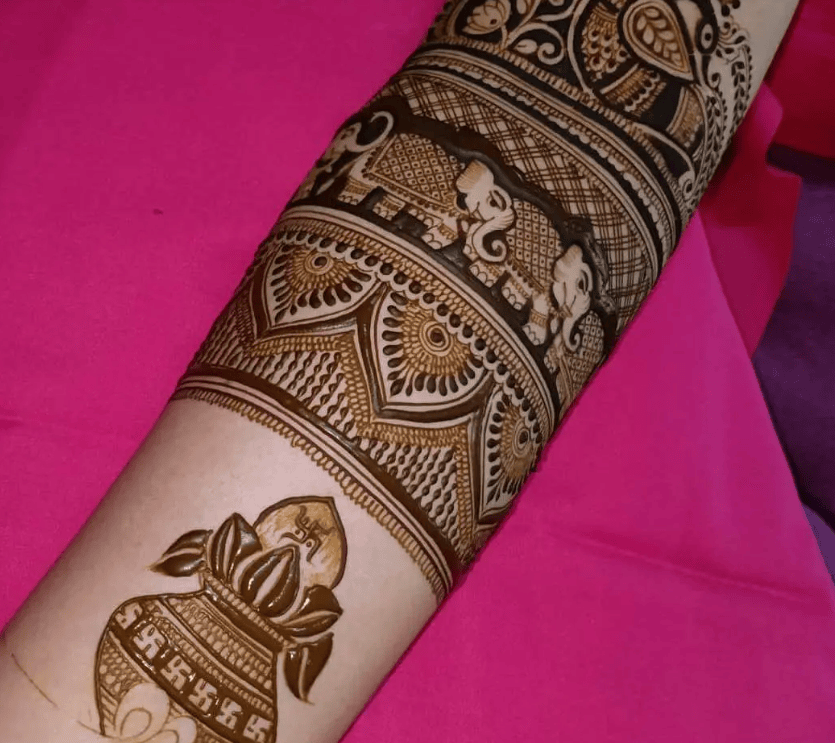
The Kalash design (Photo source: Neha mendii)
Kalash is a narrow neck spherical-shaped container. In Hindu cultures, Kalash represents life and the overflowing Kalash symbol represents prosperity and happiness. This design symbolizes the wish for eternal prosperity.
Use of Henna in Modern Society
Today Henna is mainly used in special occasions such as weddings and Eid. As we approach the Eid celebrations, this seemed like the perfect topic to write about. It should also be noted that recently there has been introduction of a new product in the market known as black henna or “Piko” in Swahili. This is a kind of hair dye which stains the skin black when applied. The black henna is more popular with dark-skinned people because the stain is more visible on their complexion. Natural henna is most favored by light skinned women.
Nevertheless, doctors have raised alarms on the severity of the side effects of black henna usage. The implications are not limited to severe itching and blistering, scar formation, and lifelong allergy to other selections of dye. One needs to measure the positives and negatives when choosing to use this product.
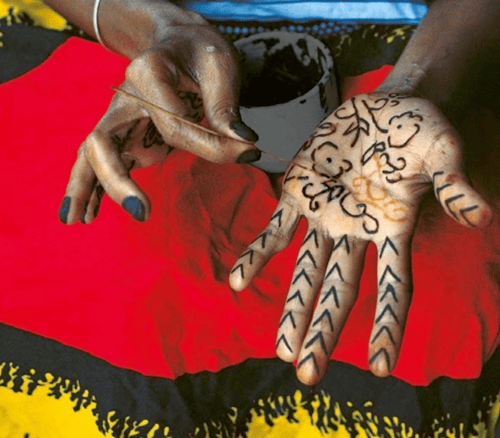
Applying natural henna with a twig, Lamu, Kenya 1999. (Photo source: Carol Beckwith and Angela Fisher.)
It is quite rare to find beauty adornment and culture lasting for as long as henna has. This shows the universal connection of mankind. Despite changes, struggles, seasons and time, deep down we have similar desires, needs and the eye for the aesthetics. Beauty is necessary for a fulfilling life, nature, decorations and makeup give color to the black and whiteness of existence. Henna adornment represents years of love, family and traditions transferred from generation to generation. The next time you decide to adorn yourself with Henna, know that you are embraced by history and time itself.
